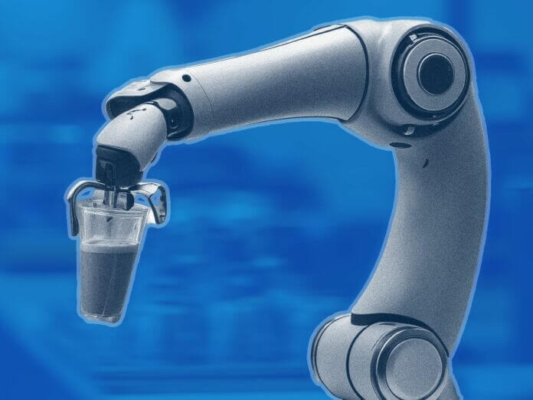

In 2024, Square surveyed 2,000 restaurant owners across the English-speaking world. More than half of the respondents—54 percent to be exact—said they planned to spend more on automation over the next year.
The restaurateurs who already used automation gave even more full-throated support to the technology. Every single respondent who used automation said these tools “improved their businesses.”
Of course, Square didn’t specify the type of automation driving the industry’s enthusiasm. A lot of it was probably software-based process automation: Things like automating inventory and vendor orders, for instance.
That’s great technology, but customers don’t get to see it. It doesn’t help your frontline staff. Workers and the dining public alike are hungry for technology that is, for lack of a better word, cool. They’re ready for the robots—or at least humans and robots working together, in a system known as “cobotics.”
That’s a bit more daunting to the restaurant designer than process automation software. But it doesn’t have to be. Today’s electronics components come pre-loaded with smart gadget capabilities like facial recognition, voice control, and manual robotic training.
At Mouser, we used some of the best components on the market to build a robotic coffee machine that’s café-ready. You can, too. Take this project as proof of concept, and one example of what’s possible with today’s AI-enhanced boards. Here’s how we did it.
The RoboCafé Voice-Controlled Robotic Coffee Machine
We built a fully functional voice-controlled coffee brewing system, complete with a robotic arm that serves the customer. We added an LED strip light as a visual indication of the order’s progress.
If you’d like to try a similar project, start by assembling the components. Here’s what you’ll need:
The RoboCafé Bill of Materials
- A coffee machine with preset brewing options (cappuccino, espresso, Americano, etc.)
- NXP EdgeReady Smart Human Machine Interface (SMHMI)
- A 5V general purpose power relay
- One transistor for each of the coffee machine’s preset buttons
- One resistor for each transistor
- A robotic arm (we used one from Universal Robotics)
- A three-color LED strip light (we used one from Banner Engineering)
- Assorted jumper cables
- A coffee cup dispenser
- A mounting device for the robotic arm
Building the RoboCafé Cobotic Coffee Service System
With all your components in hand, you’re ready to upgrade the coffee machine. You can tackle that task in a few ways, but here are the steps we followed:
- Crack open the coffee machine to expose the control board. Figure out the signal path from touch button to control board for each preset brewing option.
- Build circuits that imitate the capacitance-change of a push button. Connect a transistor switch to each brewing command on the control board; this will trick the machine into thinking you pressed a button when the switch is activated. Then connect these circuits to the NXP board, which will issue the general-purpose input/output (GPIO) commands.
- Program the NXP board to issue a GPIO trigger to the circuit corresponding to the order keyword (e.g., “Americano”). This is easier than it sounds, because the HMI is pretrained to recognize these words—in English, German, French, and Mandarin!
- Your voice control system is complete! Next, see how long the coffee machine takes to complete each order type. You’ll need this data to program your robotic arm and the LED strip. (You could certainly program the coffee machine’s board to send a signal to the NXP HMI when the brewing is complete, if you’d prefer.) Program your robotic arm’s travel path, from the cup dispenser to the coffee machine tray, and from the coffee machine tray to the serving counter. Training a Universal Robotics arm is as simple as manually moving it through the desired travel path.
- Program the NXP board to signal the robotic arm to move along the first half of its travel path when it registers a voice-controlled order. Have the NXP board issue the next command at the end of your pre-measured brewing time. You’ll need to do this for each order type, of course.
- At the same time, program the NXP board to send a signal to the LED strip to update the color: Once to start the order, again when the cup is in place, and finally at the end of the brewing interval.
You may have noticed that a lot of these steps involve programming the NXP EdgeReady Smart HMI. Luckily, it’s a pretty user-friendly board. This NXP product ships with a development kit—SLN-TLHMI-IoT—that leads to quick operation right out of the box.
If you plan to deploy your automated coffee machine at a restaurant, you can take advantage of another feature of the NXP EdgeReady Smart HMI: Face recognition. The board contains a camera and machine learning software that can “remember” the faces of each customer that places an order. You could use this feature to offer regular orders to returning customers, further improving the diner’s experience.
Your Own RoboCafé
Ready to bring cobots to your coffee shop? It might be easier than you think. Feel free to build your own RoboCafé—or, better yet, use this project as inspiration for even more innovative food-and-beverage automation.



